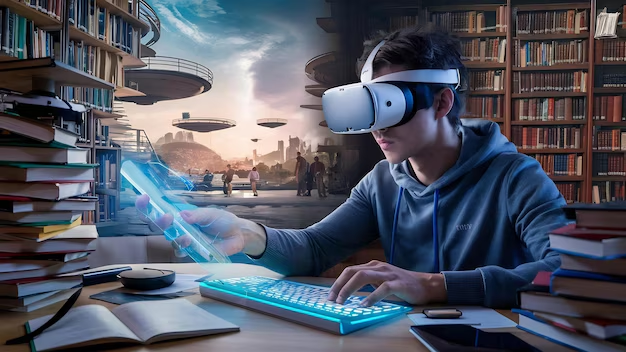In an age of information overload and accelerated innovation, education must go beyond traditional rote memorization. Today’s learners, whether in schools, universities, or corporate offices, require more than passive lectures and textbook knowledge. They need dynamic engagement, real-time feedback, and opportunities to translate theory into practice. This is where Duaction enters the picture—a transformative methodology that merges “dual” and “action” to revolutionize how we learn, apply, and grow.
Duaction is not a fleeting trend. It’s a structured, philosophy-backed educational framework that blends knowledge acquisition with immediate application. From early childhood classrooms to high-tech workplace simulations, duaction has become the driving force behind effective learning experiences.
In this blog post, we will explore the origins, applications, benefits, and future of duaction. Whether you’re a teacher, parent, corporate leader, or lifelong learner, understanding duaction may be the game-changer you need to ignite powerful, sustainable learning outcomes.
| Aspect | Traditional Learning | Duaction-Based Learning |
|---|---|---|
| Method | Passive (lectures, reading) | Active (projects, simulations) |
| Focus | Memorization | Practical application |
| Feedback Cycle | Summative (tests, end exams) | Real-time and continuous |
| Learner’s Role | Receiver | Participant and co-creator |
| Tools Used | Textbooks, exams | AR/VR, discussions, feedback tools |
| Knowledge Retention | Low | High |
| Motivation | External (grades) | Internal (engagement, progress) |
Duaction is a modern educational framework that integrates learning and doing simultaneously. Derived from the words “dual” (representing twofold engagement) and “action” (symbolizing execution), duaction turns education into a participatory experience. It emphasizes that knowledge is incomplete without its immediate application.
Instead of the conventional learn-then-do approach, duaction advocates for learning while doing. This experiential, reflective loop deepens understanding, enhances motivation, and fosters long-term skill retention.
The term duaction is a linguistic blend that has gained traction in the 21st-century education discourse. While the word itself is relatively new, the idea is deeply rooted in pedagogical traditions. John Dewey promoted experiential learning in the early 20th century, encouraging schools to engage students in real-life activities. Maria Montessori emphasized “learning by doing” in her child-centered curriculum. Today, duaction stands as a structured extension of these principles, powered by digital tools and modern neuroscience.
As education shifts toward skill-based assessment and workforce readiness, Duaction provides a framework that aligns learning outcomes with real-world challenges.
- Active Engagement – Learners must participate actively, rather than consume passively.
- Immediate Application – Every concept learned is accompanied by a task or problem-solving exercise.
- Reflection – Learners evaluate what works, what doesn’t, and why.
- Feedback Loops – Real-time input helps learners adjust and grow dynamically.
- Iteration – Trial, failure, adaptation, and retrying are encouraged as part of the process.
These principles ensure that learning becomes a cycle of continuous discovery and mastery.
Duaction isn’t just pedagogically sound—it’s neurologically aligned with how the brain retains information. Modern cognitive science supports its approach in several ways:
- Active recall and spaced repetition strengthen memory.
- Kinesthetic learning activates multiple brain regions, enhancing comprehension.
- Dopamine release during achievement reinforces positive behavior and motivation.
- Mirror neurons promote learning through observation and imitation during interactive tasks.
Duaction effectively taps into these natural mechanisms, creating a neurologically optimized learning process.
Young children are instinctively aligned with duaction principles. They explore the world by doing, not by listening to lectures. Duaction in early childhood education fosters:
- Motor and sensory development through play and physical activity.
- Language and cognitive growth via storytelling and hands-on exploration.
- Social-emotional learning through group tasks, problem-solving, and communication.
Educational models like Montessori and Reggio Emilia already mirror developmental frameworks by prioritizing discovery-based learning environments.
In K–12 environments, instruction takes the form of:
- Project-based learning where students build, research, and present.
- Peer teaching that enables collaborative knowledge construction.
- Simulations in science, geography, and history to create immersive experiences.
- Creative assignments like storytelling, music composition, or model-building.
This form of learning ensures deeper understanding and meaningful engagement across subjects.
Universities around the world are integrating duaction into curricula to better prepare students for the job market. Strategies include:
- Capstone projects and research-based assignments that require real-world application.
- Fieldwork and internships that bridge the gap between academia and industry.
- Service learning is where students work on community projects as part of their academic assessment.
These applications allow graduates to emerge not just with degrees but with practical experience and confidence.
E-learning platforms are becoming increasingly dynamic in design. Platforms like Coursera, Udemy, and Skillshare implement:
- Interactive video lessons combined with real-life tasks.
- Coding sandboxes, writing labs, or design challenges embedded in the learning path.
- Peer reviews and community forums that simulate classroom collaboration.
These enhancements convert online courses into interactive and practice-driven learning hubs.
Businesses are embracing dedication as a pillar of employee development. It shows up in:
- Onboarding programs that include live project simulations.
- Skill workshops with immediate task assignments.
- Cross-functional team challenges that mirror real-world workflows.
By integrating duaction, organizations report better performance, faster skill acquisition, and improved employee morale.
Duaction is equally valuable outside formal settings. Individuals can integrate it into self-improvement by:
- Reading productivity books and applying one strategy immediately.
- Watching tutorials and replicating techniques right after.
- Joining online communities that offer challenges and feedback.
This continuous loop of learning, applying, and refining promotes lifelong growth.
Modern tech tools empower duaction like never before:
- VR/AR platforms simulate real-world environments for practice.
- Gamified learning apps like Duolingo make the application fun and addictive.
- AI tutors deliver personalized guidance and track progress.
- Collaboration tools like Miro, Slack, and Notion enable remote team learning.

- Develops critical thinking and creativity.
- Enhances knowledge retention through active engagement.
- Builds real-world skills alongside academic understanding.
- Increases learner motivation and classroom engagement.
- Allows real-time performance tracking and feedback.
- Bridges the gap between teaching outcomes and performance results.
Like all educational innovations, duaction faces certain hurdles:
- Resistance to change: Teachers and institutions may prefer established methods.
- Resource limitations: Not all schools or regions have access to the necessary tools.
- Assessment issues: Measuring practical skills can be subjective.
Solutions include:
- Professional development programs for educators.
- Hybrid approaches blend traditional with experiential methods.
- Open-source platforms and community resources that make development more accessible.
Around the world, donations are making a measurable impact:
- Finland utilizes project-based learning across its national curriculum.
- Singapore has integrated applied mathematics into daily classroom experiences.
- United States schools are launching STEM academies with live engineering challenges.
- India uses the action models in rural NGOs to teach math, hygiene, and entrepreneurship with hands-on kits.
These case studies illustrate the scalability and adaptability of duaction across cultures and economic landscapes.
Duaction is not just a new method—it’s the blueprint for the next evolution of education. Future trends include:
- AI-powered adaptive learning systems that evolve with each learner’s pace.
- Global, collaborative classrooms where students across continents co-learn and co-create.
- Learning portfolios that replace grades with real-world proof of skill.
- Skills-first education models that prioritize what students can do over what they can memorize.
With these trends in motion, duaction stands at the forefront of tomorrow’s learning ecosystem.
Duaction offers more than a new buzzword—it redefines what it means to learn effectively. It teaches us that theory without action is fragile, and action without theory is misdirected. Together, they create a potent formula for deep learning, real-world readiness, and personal transformation.
As education becomes more democratized, digitized, and decentralized, duaction provides a human-centered, purpose-driven model that adapts to learners’ needs, interests, and aspirations. From early education to executive training, from traditional classrooms to virtual labs, duaction is the perfect key to effective learning and sustainable growth.
LED Tunnel Lights: Smart Safe and Efficient Illumination
What is the main idea behind duaction?
Duaction combines the process of learning and doing, enabling learners to apply theoretical knowledge immediately in real-world or simulated contexts for deeper understanding and long-term retention.
Can Duolingo be used in virtual classrooms?
Yes, duaction thrives in online environments that include interactive tasks, simulations, peer reviews, and real-time feedback, making virtual learning more engaging and effective.
Is duaction only useful for formal education?
No, education is equally beneficial for personal development, workplace training, hobby learning, and entrepreneurial ventures where practical application drives success.
How can an educator begin implementing duaction?
Educators can start by redesigning lessons to include hands-on projects, real-life case studies, collaborative tasks, and continuous feedback loops instead of relying solely on lectures or tests.
What makes duaction more effective than traditional methods?
Duaction engages multiple learning pathways—cognitive, emotional, and kinesthetic—creating a more immersive, actionable, and meaningful learning experience that is hard to forget.

